I first crossed the Straits of Gibraltar some forty years ago. Back then I wasn’t aware of its significance as a focal point of bird migration, but things change and witnessing the fall migration from the commanding heights of the Rock of Gibraltar has been on my list of things to do for some years. Early in September 2014, I made that pilgrimage, planning to be there when Africa-bound vultures, buzzards and eagles are on the move.
It was actually logistically easier for me to not stay in Gibraltar itself which, as a British Crown Colony with constrained geography, a slowish, passport-controlled border with Spain and relatively limited flight connections, has its limitations. Instead I found a direct flight from Canada to Malaga from where I could travel anywhere along the Mediterranean and Atlantic coasts, east or west of the Rock of Gibraltar.
Hordes of Brits live along the Costa del Sol, the resort-lined coast just east of Gibraltar, and English is the de-facto second language. So, using Birding Pal (www.birdingpal.org), I had no trouble finding local, English-speaking birders willing to help me. One of the responses was from a couple who own a beautiful little guesthouse near Casares, a small, white town located centrally and strategically close to the birding action. They provided my ideal accommodation.
People asked me what target birds I had in mind, but really I had very few; I’m not a list-ticker and my goal was to experience the raptor migration. As a child and teen, growing up in England, I had an informal mental list of birds I’d seen in books but which I believed to be out of my reach. That list included: Hoopoe (a dove-sized, pink, black and white bird with a flamboyant crest), Great Bustard (a bird of open grasslands, sort of an ostrich / turkey cross) and a Bee-eater (iridescent blue, green, gold and chestnut, a little bit like a streamlined kingfisher.) It would be icing on the cake if I saw any of those.
Raptors. My visit was perfectly timed. From my hosts’ terrace with its commanding view, we watched dozens, maybe hundreds, of Black Kites and Honey Buzzards gathering in swirls and riding thermals to gain height, then unwinding to stream overhead aiming for the 17 Km crossing at Gibraltar. We always seemed to have resident Griffon Vultures in sight too, riding and skimming the ridge waves like surfers, sometimes just three or four but often twenty, thirty or more. One evening a juvenile Egyptian Vulture passed overhead; an exceptional bird I was told. They were all exceptional to me.
Near Tarifa, where the Africa and Europe almost touch, there are a couple of strategic lookouts where raptor enthusiasts gather to search the skies and record numbers of birds. By late morning of the day I was there, they’d already tallied Booted, Bonellis, and Short-toed Eagles, Montagues and Marsh Harriers , Common and Lesser Kestrel, and Peregrine and Lanner Falcon ( I missed this last one). The sky was always busy.
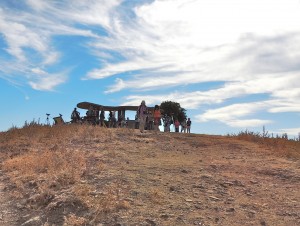
Watching the cluster of sky searchers reminded me of a pagan gathering, a VW camper van with disheveled bedding tumbling out its open door was obviously home to one pilgrim.
Passerines, waterfowl and others. The passerine migration peaks later in October but there was plenty to see in early September: some early migrants and many some resident birds. I managed to see and appreciate some of the Old Worlds’ rather drab warblers including: Melodious, Willow, and Cetti’s Warblers; as well as Sardinian Warbler, Chiffchaff, Iberian Chiffchaff and Blackcap. Among Europe’s garden birds were Robins, and Blackbirds, and loads of finches too: Chaffinch, European Goldfinch, Greenfinch and Serin. The thrush family was out in force with: Stonechats, Northern Wheatears, Black, and Black-eared Wheatears, a Whinchat, Redstarts, Black Redstarts, Rock Thrush and Blue Rock Thrush. We had a resident Blue Rock Thrush near the guesthouse which showed itself briefly almost every day but seemed more comfortable keeping its distance.
Waterfowl, or at least birds that prefer the presence of water, live in or make their way to southern Spain late in the year. Before mankind got draining and taming, I’m sure it hosted a massive overwintering population (actually it still does, but they’re mostly North European retirees). On a guided tour I visited a couple of shallow inland lakes. The near shoreline attracted Black-necked Stilts, Little Ringed Plovers and Greater Flamingoes, a little farther out were Moorhens, Black-necked Grebes and the back-from-the-brink-of-extinction White-headed Duck (a close relative of North America’s Ruddy Duck, which so fancied the White-headed that it came close to genetically swamping it. A cull of the Ruddy Ducks quickly stopped that.) There were lots of other duck types out there: Eurasian Teal, Northern Shoveler, Common Pochard, Gadwall and Great Crested Grebe.
A visit to an expanse of former lagoons that was drained in the sixties to make room for rice and cotton, turned up thousands of White Storks, Little Egrets, Glossy Ibises, and a Purple Heron. Later we met up with a group of Bald Ibises, allegedly one of the world’s ugliest birds, but I kind of liked them, and I’m sure their mothers love them.
I managed to meet up with some of my I’d-love-to-see-that-but-probably-never-will birds. Hoopoes, for example, are birds that you stumble upon rather than find by looking, and I was lucky with three sightings. Hoopoes are magical, bold black and white striped wings folded against a dusty pink body are dramatic enough but they also carry an exaggerated crest that serves to mirror the probing of their long beaks. I came across a group of three poking their way around a dusty cattle pasture and against that background their flamboyance provided effective camouflage.
A Red-necked Nightjar made Bird of the Day as did an astonishing flock of European Bee-eaters, you can read about them by clicking on their names above.
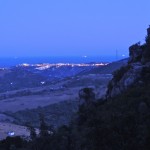
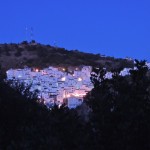
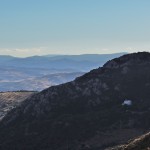
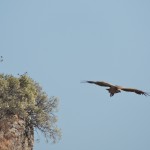
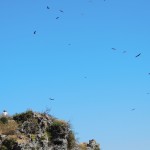
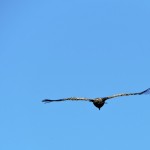
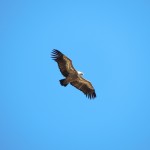
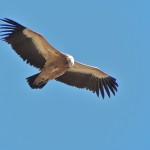
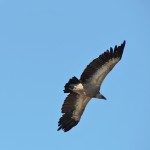
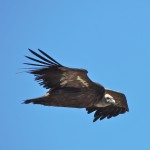
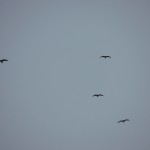
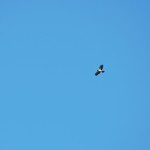
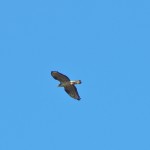
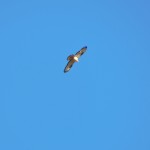
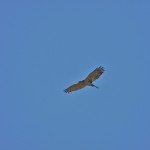
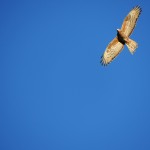
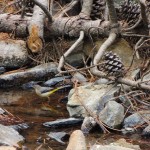
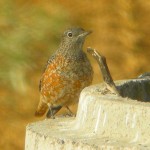
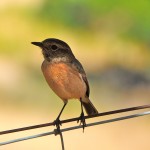
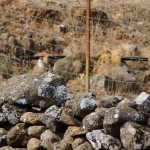
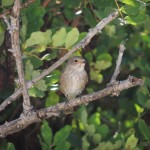
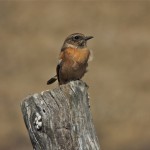
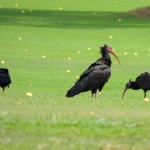
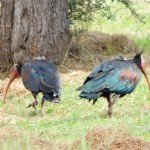
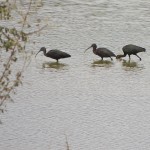
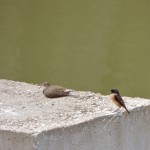
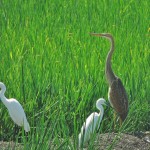
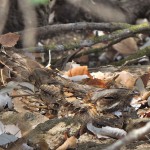
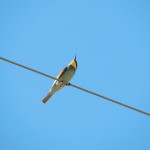
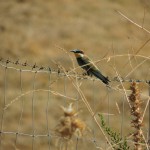
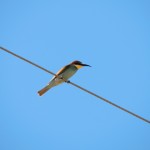
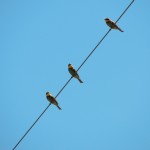
Lovely to read your report of your visit over here; you certainly had some wonderful sightings and your visit just about coincided with the main Honey Buzzard migration which is, probably, the star attraction for most, My Belgian friend, Marieke who studies their breeding along with Goshawks back in her own country, has been coming twice a year for the past couple of years and has already booked her accommodation for may. May to welcome the Honey Buzzards back and September to say her goodbyes.
You saw Blue Rock Thrush , Rock Thrush and Northern Wheatears which raises a question for me when you mention “Black-collared Wheatear.” You would probably have seen both Black Wheatear, a resident breeder in Andalucia, and Black-eared Wheatear if you went into the mountains albeit both are mountain birds but the latter is a summer migrant. Black Wheatear is all black (or very dark, dull brown with the trade-mark white rump whereas the other is an almost pale white/yellow bird with a rather striking black mask. Which or both did you see?
A cracking report and looking forward to reading the next.
Bob
It was a Black-eared Wheatear, my slip. Thanks Bob for your help.